A few years ago I came into a Ruger 9mm of some fashion. It was either a P89 or P95…I can’t recall. But the price was right and I thought it would be a good idea to have a cheap, disposable, quality handgun around. I went on GunBroker to see if I could pick up a few spare magazines. I wound up finding an auction for a lot of 11 factory magazines. As it turns out, I won the auction with a ridiculously low bid. So now I had one handgun and a dozen magazines. This is the part where I fall into the rabbit hole.
I figured since I had one handgun and a dozen magazines, it would make sense to get another handgun and allocate the magazines accordingly. Fast forward a few years and a dozen Rugers later…well… you know how that goes.
So, now I have all these Ruger P89/P95 handguns that take the same magazine. Convenient, but a little awkward as well since the Ruger P-series was never much of a barnburner in terms of popularity. Since I avoid non-factory mags whenever possible, I try to buy used Ruger-made mags. Here’s where it gets interesting. All of those double stack 9mm mags pretty much look alike. How do you you tell the Ruger factory mag from some crappo USA Brand or other sheet-metal abortion?
Well, having a stash of mags here for guidance, I’m going to provide you a quick tutorial, as I understand it, on identifying and distinguishing Ruger factory mags from the non-factory mags. For 99% of you, this post is worthless. But, for those who do like the P-series, you might find this useful.
P-series 9mm factory mags came in, basically, four styles:
- Full-capacity, blued
- Full-capacity, stainless
- 10-rd capacity, blued
- 10-rd capacity stainless
There were some oddball compact variants in the 9mm P-Series (P93, P94) but it appears they shared the same magazine.
All the 9mm P-series utilize an ambi mag release that puts the mag catch on the front of the magazine. If your mag doesn’t have a notch on the front of the magazine, it’s not for a P-series gun.
Ruger-made mags, as opposed to contract-made-for-Ruger mags, have a distinctive caliber marking stamped on them.
The easiest and fastest way to tell a Ruger P-series factory 9mm mag is by the baseplate. Most of them have a thick ‘bumper pad’-type baseplate. Some have the Ruger logo, some do not. Both are factory mags, however.
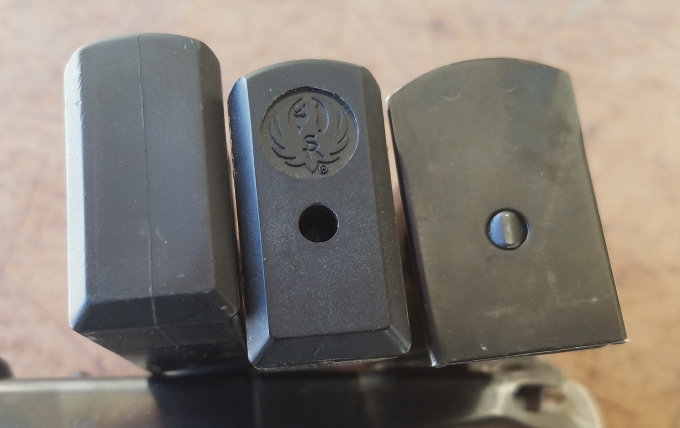
L – R: Unmarked factory mag baseplate with no disassmbly hole, marked factory mag baseplate with disassembly hole, unmarked flush-fit factory baseplate with disassembly hole
Since most aftermarket mags have a flush-fit unmarked baseplate, other identifying features need to be present to assure that the magazine is factory made.
Ten round magazines had a truncated metal body and then a plastic ‘spacer’ at the bottom of the magazine to give it the overall length of a full-capacity magazine. On some ten-round magazines there is a hole in the baseplate for a punch to allow disassembly of the magazine, other models of ten-round magazine do not allow disassembly and the plastic space is permanently fixed to the mag body by a roll pin going through the mag body and spacer.
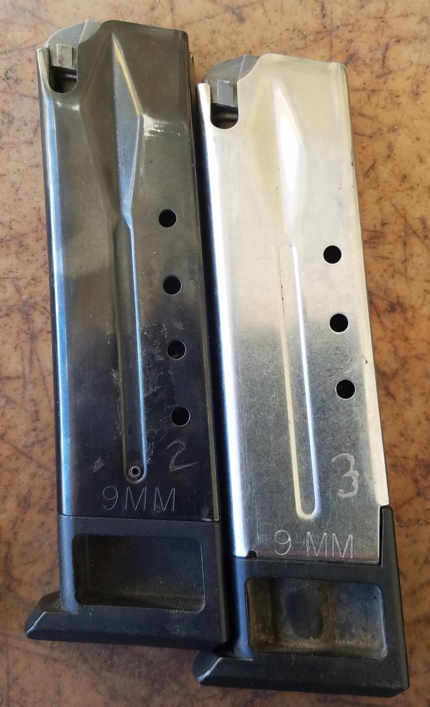
Two Factory Ruger 10-rd 9mm P-series magazines. Magazine on left has a roll pin (seen above ‘M’ in ‘9MM’) to prevent removal of plastic magazine extension. Magazine on right can be disassembled (note lack of roll pin.)
It also appears that during the decade of 10-rd magazines, Ruger also made ‘restricted’ magazines for law enforcement and military users.
 Magazines also usually have a groove running lengthwise down the side of each mag. This groove is absent in factory magazines that have flush-fit baseplates.
Magazines also usually have a groove running lengthwise down the side of each mag. This groove is absent in factory magazines that have flush-fit baseplates.
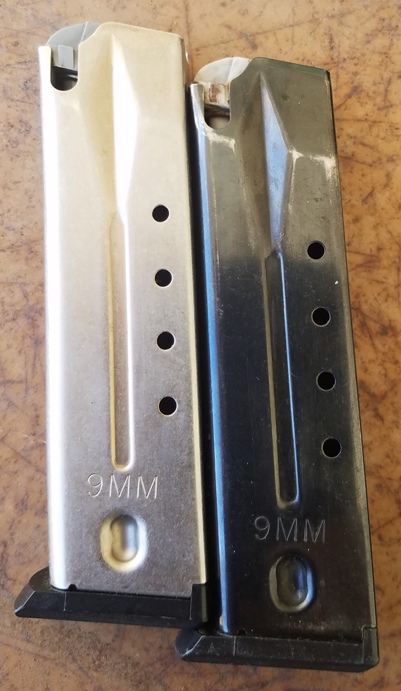 From appearances, it looks like Ruger handed off manufacturing of the P-series mags to Mec-Gar. Mec-Gar mags are identical to the Ruger non-basepad factory mags in virtually every regard. The Mec-Gar branded mags differ in finish and placement/number of witness holes. All the Ruger factory magazines I have observed have 3 or 4 witness holes on both sides of the magazine. The Mec-Gar do not. To the best of my knowledge, Ruger never offered any ‘extended capacity’ magazines for the P-series…all those 20-, 32-, and 40-rd magazines are aftermarket and probably of dubious reliability.
From appearances, it looks like Ruger handed off manufacturing of the P-series mags to Mec-Gar. Mec-Gar mags are identical to the Ruger non-basepad factory mags in virtually every regard. The Mec-Gar branded mags differ in finish and placement/number of witness holes. All the Ruger factory magazines I have observed have 3 or 4 witness holes on both sides of the magazine. The Mec-Gar do not. To the best of my knowledge, Ruger never offered any ‘extended capacity’ magazines for the P-series…all those 20-, 32-, and 40-rd magazines are aftermarket and probably of dubious reliability.
Factory mags get the highest marks for reliability, and the Mec-Gars are pretty much tied for that with the factory. Other brands such as ProMag have mixed reviews, and no one has anything nice to say about USA brand mags. For best results, I would recommend sticking with the factory mags, factory mags made by Mec-Gar, or Mec-Gar’s own version.

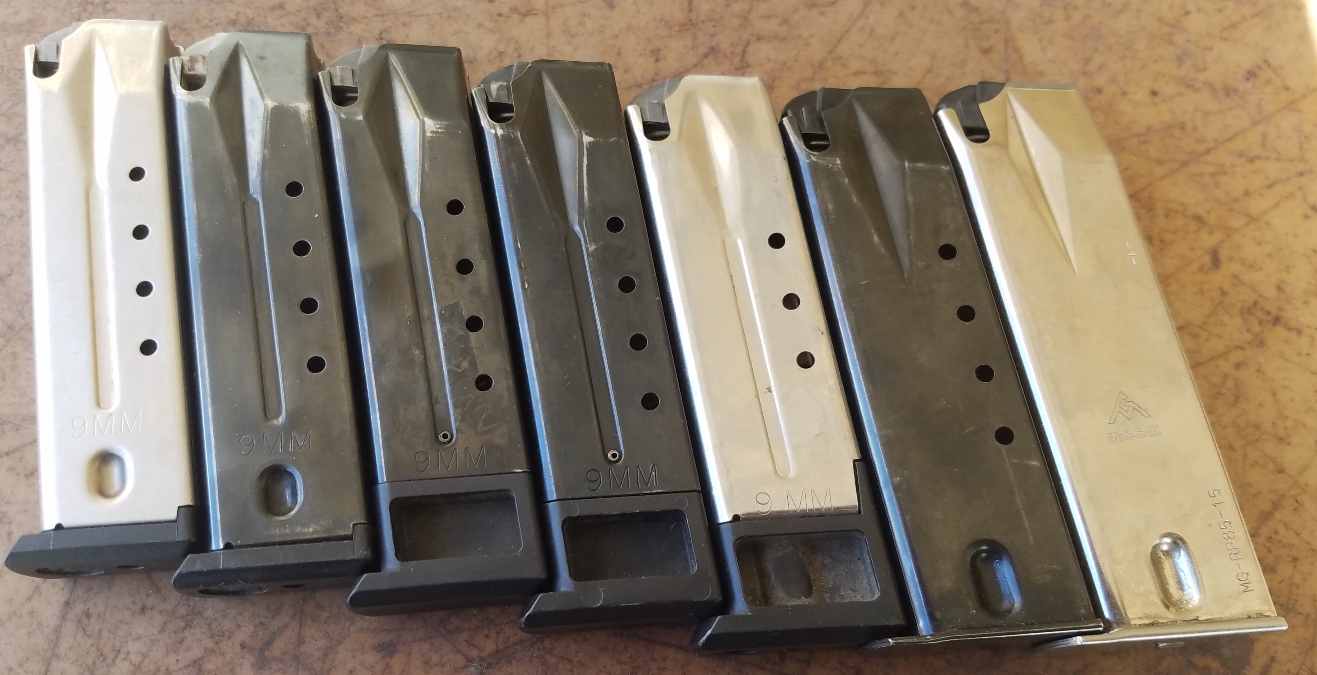
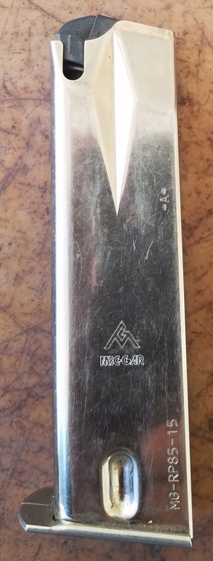
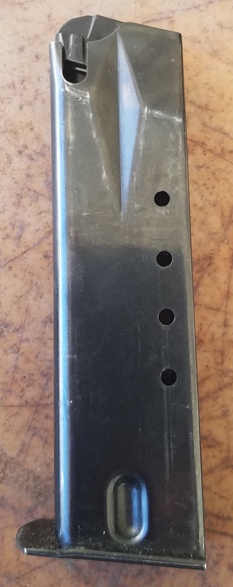
Agreed. I’ve had excellent luck with Mec Gar in all the platforms I’ve tried them and they are go to now. Pro-Mag? I’ll take ’em if someone gives it to me. In my experience, they are a crap shoot. Some work great, some not so. I have a couple, and they’re range only.
Ratios are hard. I’m almost always out of wack long or short. Too many mags for this gun and not quite enough for that one. Then I get a new gun an it’s messed up again.
I love the P-series. The P95 is one of the best overall 9mm pistols EVER, in my humble opinion. I also found the P95 to be outstandingly accurate and 100% reliable, though I’ve never tried steel- or aluminum-cased stuff in the ’95.
My only possible complaint is that the P95 is somewhat wide, but that never gave me trouble for concealed carry. The pistol is a bit wide, but it’s no harder to carry than some revolvers.
Thank you very much for the mag. tutorial — a fun and informative piece. Well done!
My only criticism is that I’ve found the mag release can be accidentally released if your not careful with your holster choices.
now what you need is a P9 carbine that takes the same mags!
Or a PC9 carbine, even.
Believe me, I’ve been looking but they are hard to find and when i can find one they want as much for it as they would for a brand new AR. In fact, for the price of the 9mm Ruger carbines, I could get a decent 9mm AR that takes Glock mags. But…should you happen to come across a PC9 in good shape at a reasonable price, lemme know.
Have a P-85 that was a family hand me down that is in the safe as a extra handgun in SHTF situation. Last year was given a P-89 D.C. for helping a women sell her late husband’s gun collection. It had a sight that was the size of a one liter bottle of pop that did not work. A saddle was around the slide that I could not get off as there was a different take down pin. My gun smith ordered a new pin and striped all the junk off. When I picked it back up the gun smith wanted to buy it off me and I told him after I shot it I would give him a call. That’s when he came clean and told me the weapon was a custom gun from a famous gunsmith in Arizona. Match grade barrel, match trigger and full polish job on the inside,aircraft grade aluminum frame with custom grips. Have been using it on three gun competitions and it’s a outstanding shooter. Ordered ten factory mags and now I’m good to go. To bad Ruger is not making these weapons anymore.
I cannot imagine the looks you must get when you show up to a competition with a P89.
The young men just keep eyeballing the old man with the strange handgun. Then someone will ask what kind of pistol is that? Than I will let them try it and than all the questions begin. Love to see the look on their face when it shoots as well or better than what they are shooting. A little heavier but it makes it very stable and the trigger is the nicest most of them have ever felt. The best look is when they find out my age and I’m keeping up with them.
I’ve recently purchased a P89 with a 15 rd. magazine. I took it to the range and put 50 rds. through it. I love it ! Where can I buy some more 15 rd. factory mags that don’t cost an arm and a leg.
I suppose it depends on what you consider an arm and a leg. I usually pay between $15-20.
That’s the price I’m looking for. Where can I buy a couple. I’m in Kansas City and the cheapest I can find is $ 33.95
Gunbroker works for me.
That would be a good price. Here in Kansas City the best price l’ve found is $33.95. Where can I get a couple for your price.
Thanks,
Gary